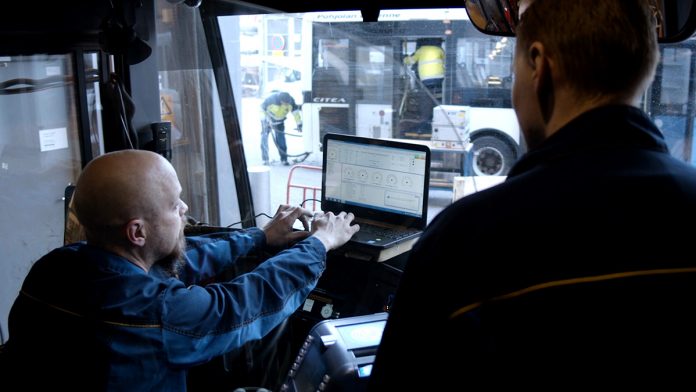Electric buses are breaking through in city transportation. VTT Smart eFleet simulation service, created by VTT Technical Research Centre in Finland, helps to plan the optimal solution
The development of electric buses combined with new regulations to reduce emissions is driving the electrification of city transportation. The expectations are high: electric buses should be as reliable as diesel buses, but also energy efficient and with improved user experience. The charging infrastructure is one of the key elements.
VTT Smart eFleet service helps to find the most cost-effective way to introduce electric buses while maintaining the quality of transportation. The simulation service is the result of decades of research, experimental measurements, and technical data.
From Tampere, Finland…
Tampere area in Finland used VTT Smart eFleet solution in preliminary studies for electrification of bus transport. They modelled four bus routes and examined where fast charging on a route is the best option, and when it is better to use a charging station at the depot.
The aim was not a detailed comparison, but to understand the bigger picture. VTT Smart eFleet is a useful tool for this kind of advance planning. Switching the driving power to electricity is a significant move in urban bus transport and the change should be implemented without wasting investments.
…to Santiago de Chile
Santiago de Chile is one of the largest cities in South America, with over 7000 buses in daily circulation. The city is surrounded by mountains, which capture emissions in the environment, causing air pollution. This was one of the drivers behind the electrification of Santiago’s bus services.
At the end of 2020, Santiago had almost 800 electric buses in regular operations, and up to 1,670 additional units tendered. The transition has been planned in close cooperation with VTT, using the VTT Smart eFleet simulation toolbox. Simulation helps to decide which routes have the most potential from a techno-economical point of view, where to operate and what kind of specifications should be set for the buses. The goal is to electrify the entire public fleet in Santiago by 2035, and in Chile by 2040.
Please note: This is a commercial profile
© 2019. This work is licensed under a CC BY 4.0 license.











